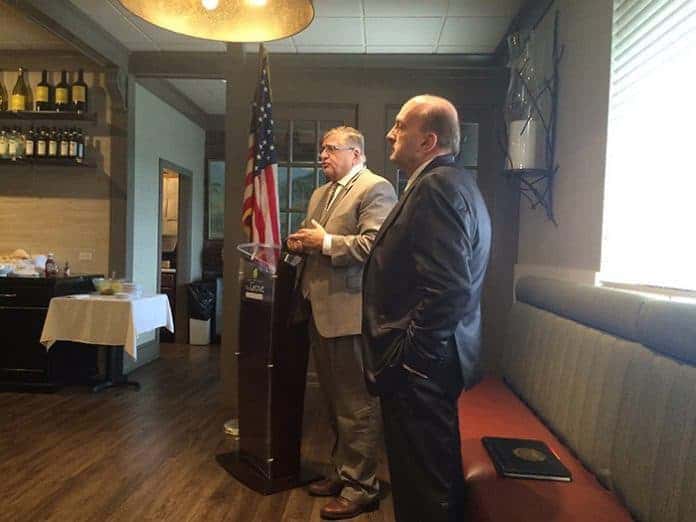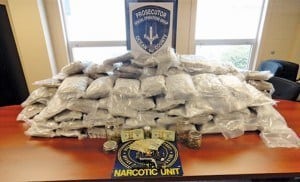
TOMS RIVER – The sheriff and prosecutor gave the Ocean County Mayors Association an update on the opioid epidemic, and said that some progress has been made this year.
It’s possible, given the number of overdoses so far this year, that Ocean County might see a decrease of about 25 percent from last year, Prosecutor Joseph Coronato said. There were 209 for all of 2016. This would be the first decrease in years.
Although many people think of the problem as mostly heroin, that does not paint a complete picture, he said. Fentanyl, another opioid, has been showing up in the toxicology of overdose victims more and more. In 2014, it was present in 10 percent of overdoses. This year so far, it’s been present in 65 percent.
The drug problem spreads out into other charges, he said. The cost of feeding a drug habit causes people to attempt lots of other crimes.
But a lot of the addiction doesn’t start with heroin or fentanyl. It starts with prescription painkillers.

Sheriff Michael Mastronardy said 70 percent of people in the county’s drug court were originally addicted to painkillers. The Ocean County Drug Court is an intensive probation program offered to some nonviolent offenders, geared toward keeping people from going back to old habits.
The three main focuses for police combating the opioid epidemic is education, enforcement, and treatment, Coronato said.
Officers are embedded in the school system, he said. They meet with superintendents and speak to parents at back-to-school nights.
There is a free app for mobile devices that kids can use to reach out to the police without any penalties. The information for the app is on a sticker inside lockers. Unfortunately, the police have had to address addiction at a surprisingly early age. The schools have a schedule to be searched with drug recognition dogs.
“We’re not looking to put kids in jail,” he said. “We want to educate the kids and the parents.”
On the enforcement side, police are still putting dealers in jail, but also going a step forward. They are holding them accountable if someone overdoses on drugs they sold, he said.
When a dealer is sentenced, they forfeit belongings, such as a car, which the county can then sell. This money is used to supply the area with Narcan, the chemical spray that can reverse an overdose. It also funds other drug programs.

Treatment is the third branch of addressing the drug problem. Saving a life might only be temporary unless you follow up with the patient. After someone is revived with Narcan, they are then approached by a recovery coach while still in the hospital, he said. This is a window of opportunity, after someone’s life was almost lost, to encourage them to seek treatment for their addiction.
However, the police didn’t want to wait until someone almost died before they got help. So, the Blue Hart (Heroin Addiction Recovery Treatment) program was created to give people the option of seeking out treatment on their own. All they have to do is come into a participating police department on a given day and they can turn in their drugs without facing any charges. A bed in a treatment center will be found for them. Currently, Brick, Manchester, Stafford, Ocean Gate, and Lacey are participating.
“There have been 275 people who have walked into a police station and said ‘I need help,” he said.






